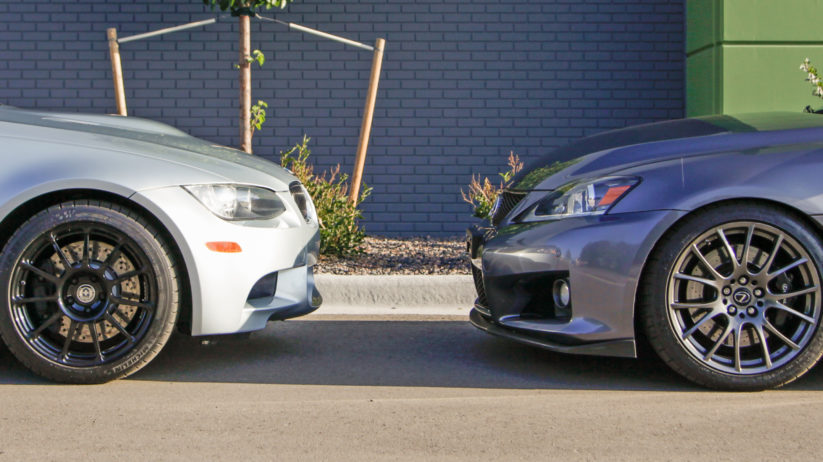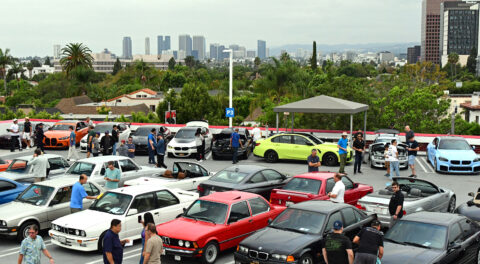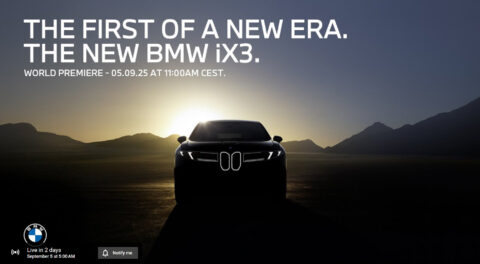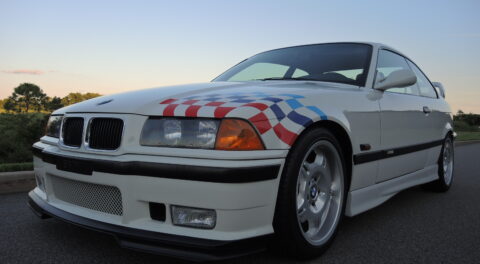They say hindsight is twenty-twenty and perspective is a virtue. I recently came across two performance sedans that offered a little of both when viewed from the lens of a decade’s passage. The late aughts (the name given to this century’s youngest decade) were a fantastic time in the automotive industry. Turbo-charging had yet to become the dominant performance engine architecture and the performance sedan arms race had escalated beyond the 400-horsepower mark thanks to V8 engines. These weren’t the old fashioned piston-slappers of the original muscle car era; instead they were highly refined modern engines—the last of the naturally-aspirated, fire-breathing monsters.
The V8 had also trickled down into smaller sports sedans and spread beyond its traditional American footprint. From Germany were the Mercedes-Benz C63 AMG, Audi RS4, and the benchmark BMW M3 sedan. From a hemisphere away, Japan had also thrown its hat into the ring with its first F car, the Lexus IS-F. Having stumbled into possession of a BMW M3 sedan and a Lexus IS-F recently, an opportunity for journalism presented itself—how would they compare with a decade of perspective?

The BMW M3 and Lexus IS-F, 400-horsepower V8 Sedans.
The 2008 to 2014 Lexus IS-F was the first model in the Lexus F sub-brand, Lexus’s alternative to the heavy hitters from Germany. It was based on the second generation Lexus IS, but with revisions significant enough to warrant its own internal designator and external model name. It featured a bulged hood to accommodate a five-liter 416-horsepower V8 coupled to a quick shifting eight-speed automatic transmission. A sport suspension developed at Fuji Speedway and tuned on the Nurburgring was mated with six-piston Brembo brakes and nineteen-inch BBS wheels. It was adorned inside and out with F badges, carbon fiber bits, unique side skirts, and an interesting stacked quad tip exhaust. The interior was equally exclusive and sporting, with a lengthy list of IS-F-specific options.
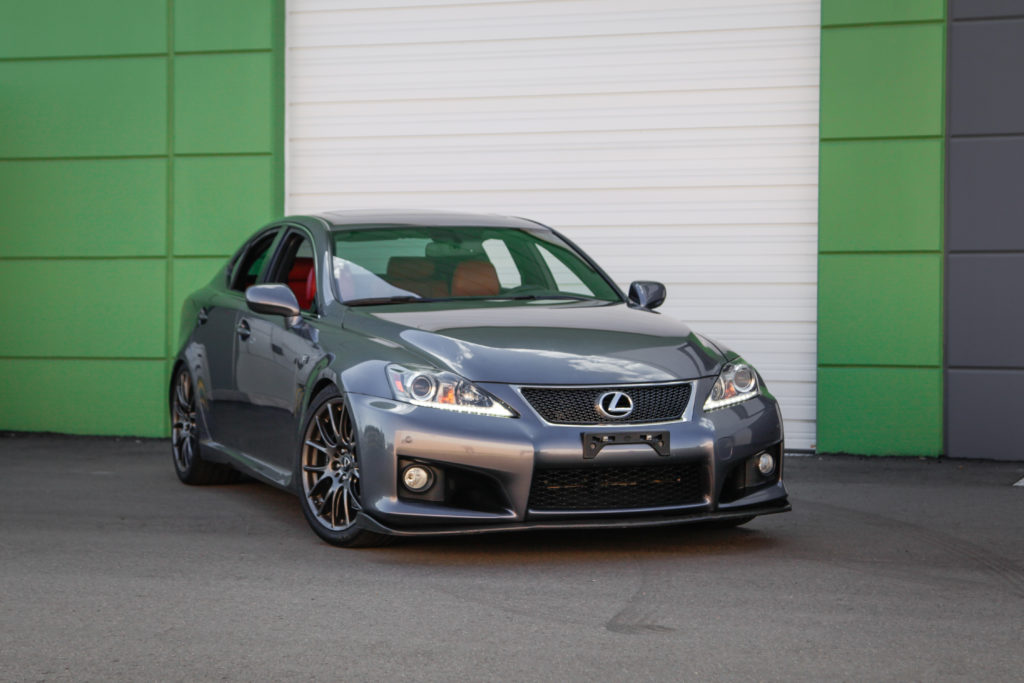
The Lexus IS-F.
The 2008 to 2013 BMW (E90) M3 was the fourth generation M3 and highly evolved as a result. It was the last of the high-revving, naturally aspirated, individual throttle-bodied recipe that traced its roots back to the iconic original M3. Its S65 V8 engine was good for 414-horsepower that occurred just shy of an astronomical 8,400 RPM redline. You could have that power served through a proper six-speed manual or a seven-speed dual-clutch transmission (DCT). A power dome in the hood, fender flares, large front brake ducks, unique mirrors and an optional carbon fiber roof on the coupe distinguished the M3 from its regular 3 Series brethren. Underneath an M-tuned chassis, suspension, brakes, limited-slip differential, and eighteen-inch wheels rounded out the standard kit. From there, the options list was long—very long—ranging from individual upgrades to premium, technology, cold weather, and competition packages to special limited edition models.
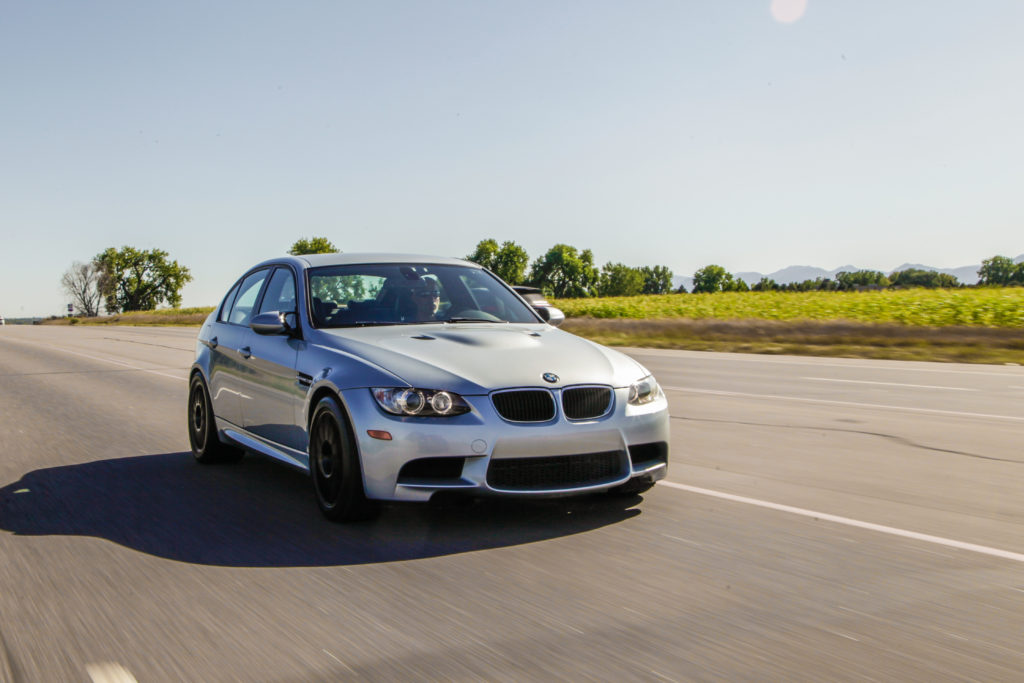
The BMW M3 Sedan.
The examples at my disposal are in the latter of each model generation’s production run, having benefited from both BMW’s and Lexus’s mid-lifecycle revisions. They were also optioned distinctly differently from each other, but in a way that an enthusiast who favored each marque would likely prefer.
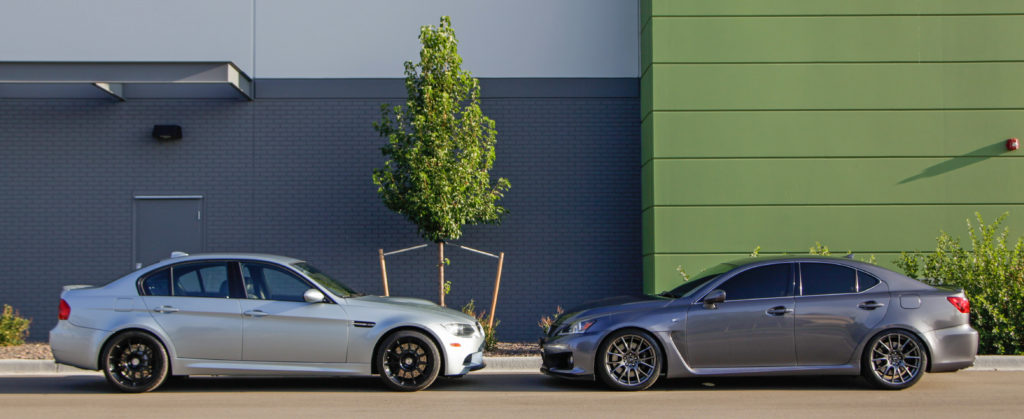
How do they stack up head to head?
The Lexus is a 2012 IS-F in Nebula Grey over two-tone red and lack leather with “aluminized” carbon fiber trim. Nebula Grey was a very rare color in the IS-F palette, even more so when optioned with the red interior. It features the Mark Levinson premium audio system, along with a lengthy list of standard IS-F kit. The late-model IS-Fs featured a limited-slip differential that significantly improved the early IS-F’s handling shortcomings. They also sport a revised instrument cluster which mimicked that of the then newly-released Lexus LFA. The only modifications consist of a lip spoiler and Swift lowering springs.
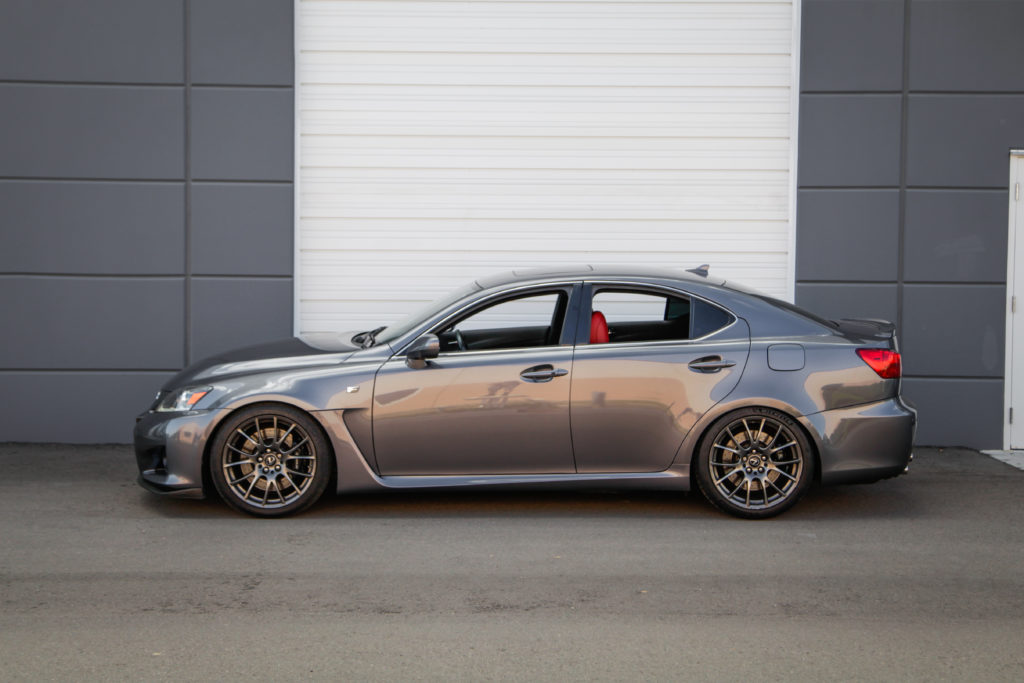
Nebula Grey over red leather is an extremely rare IS-F color combination.
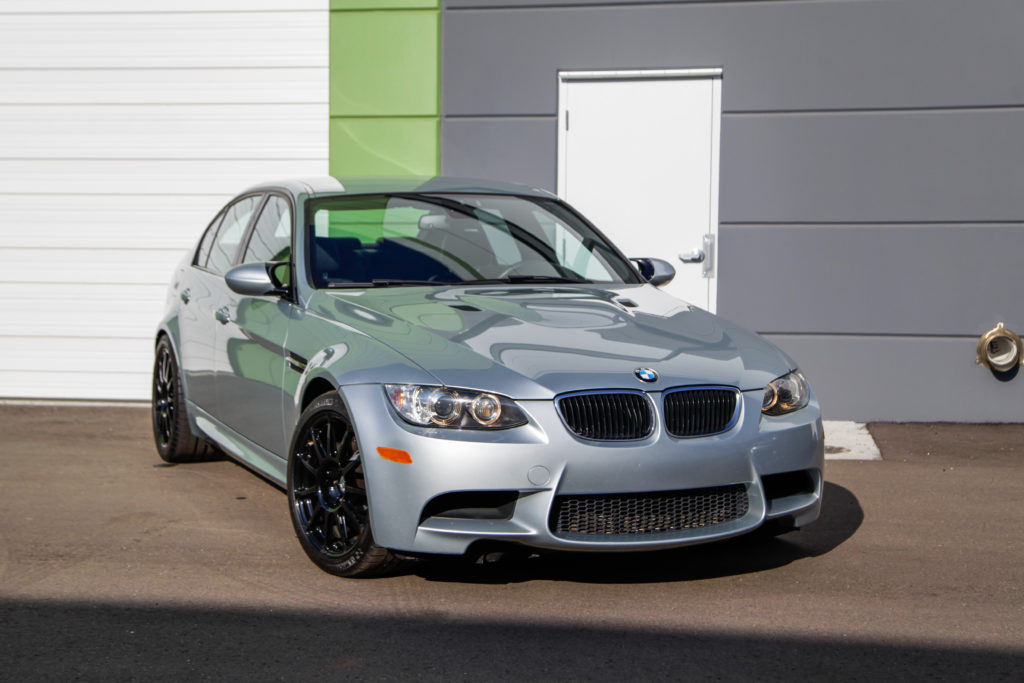
Silverstone Metallic is part silver, part blue depending on the light.
The M3 is a 2011 M3 Sedan in Silverstone Metallic—part silver, part light blue—over an anthracite and black cloth interior. Also a rare combination, as Silverstone was an M-specific color and cloth interiors were scarce in the E90 M3. The rest of the M3 build is minimalist and weight-conscious, featuring manual seats, a slick top, and the skipping of iDrive to keep things light and simple. The only notable factory option is the M DCT. Post-facelift M3s also featured revised LED taillights and, for the 2011 model year, M Drive as standard, meaning that you could have it without iDrive. Aftermarket additions are carbon fiber interior trim, an Alpine performance tune, resonator delete for the stock exhaust, and gloss black HRE Monoblok wheels.
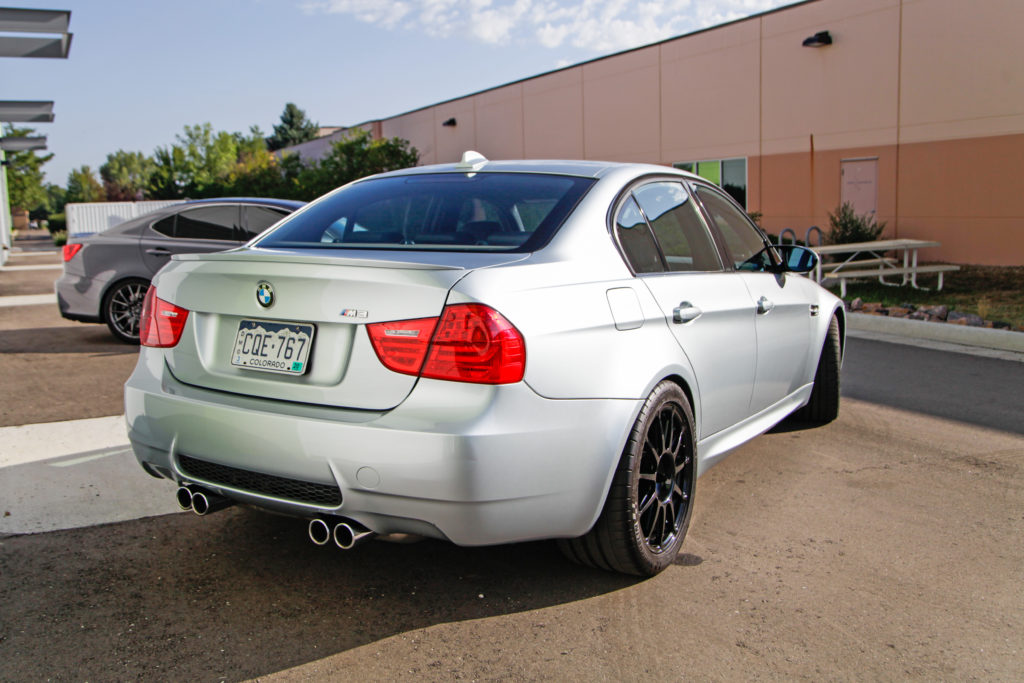
Gloss Black HRE wheels under gloss back shadowline trim give an M3 CRT (Carbon Racing Technology) look.
Taking a moment to visually digest the IS-F and the M3 in the sunlight of a late summer’s day, it is clear that both sedans pack a mean punch. They both look subdued compared to today’s over-styled cars, but they also look better as a result—less truly is more. The IS-F’s Nebula Grey finish wins over the M3’s Silverstone Metallic, the former being a sparkling rich pewter compared to the latter’s more silver than blue hue, but not necessarily better as a result. The IS-F’s BBS wheels are also much better than the M3’s stock Style 219 wheels, giving the IS-F a sinister look. This M3 rectifies that with gloss black HRE wheels, which combined with its gloss black shadowline trim, lend it an M3 CRT look—a theme that persists with the car.
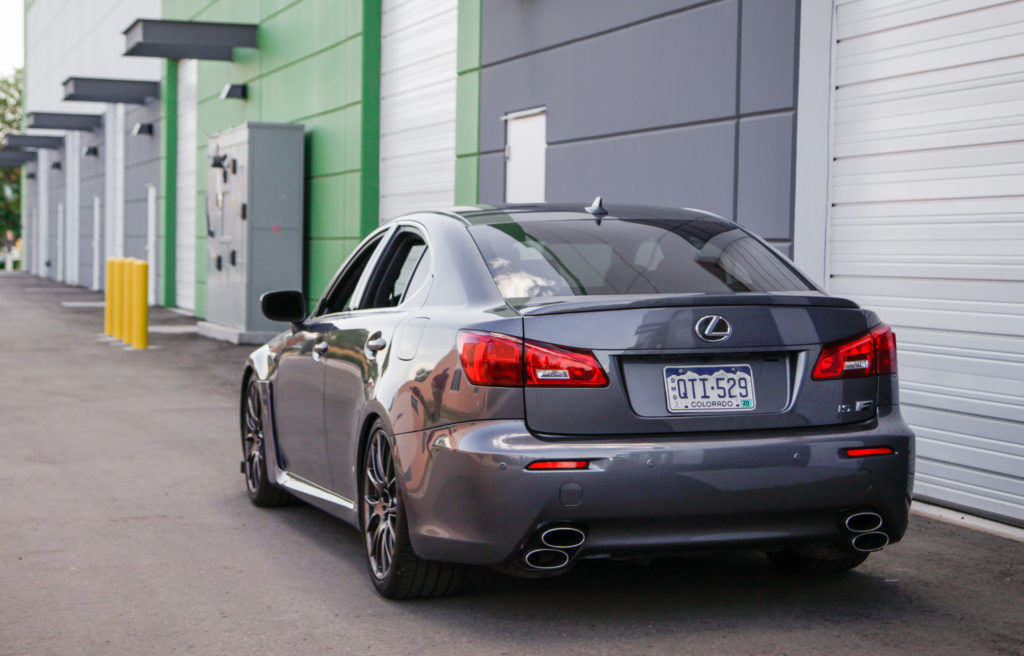
If you look closely, you can see carbon fiber in the Lexus emblem.
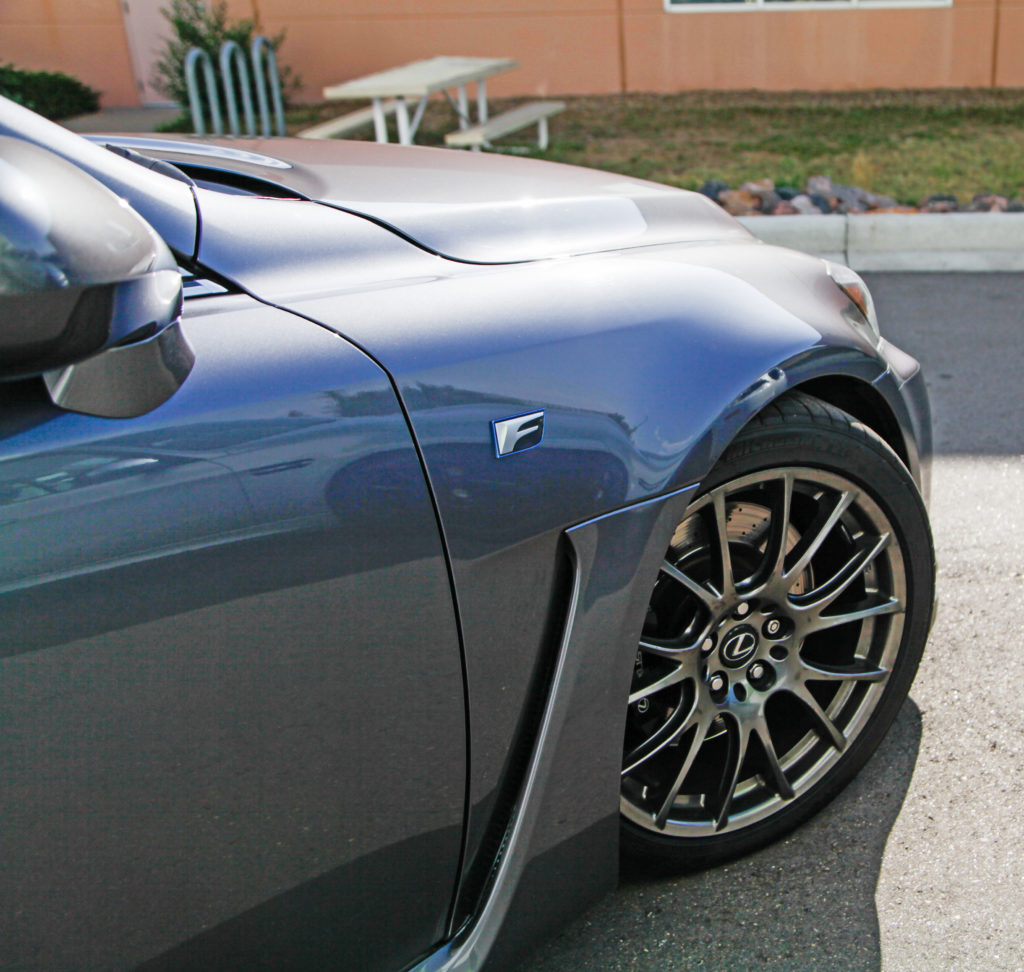
The IS-F wins the in the stock wheel department, but the faux fender vents are unnecessary.
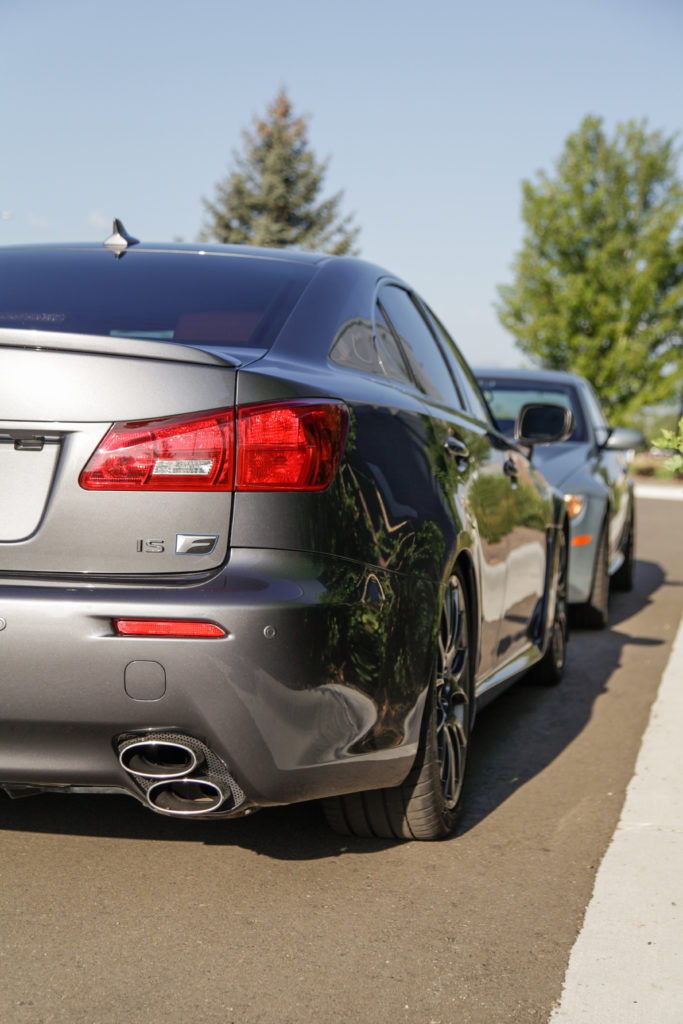
The bumper-mounted exhaust tips are also for show, with the real exhaust tips residing beneath.
They both have bulged hoods, well-proportioned grilles (something lacking in the modern large-grille era), side emblems, rear lip spoilers, and quad exhaust tips. The IS-F has a larger rear lip spoiler and its quad exhaust tips are stacked vertically and integrated into the rear bumper cover. At first glance it looks like this would melt the bumper cover, until you realize that they are just decorative openings for the actual exhaust tips hidden beneath. It also has faux vents behind the front wheels that look good, but knowing that they serve no real purpose hurts its performance credibility. In contrast, one of the M3’s hood vents actually serves as the engine air intake. The rest of the M3 is less flashy, but it is better proportioned. Sharp crease lines frame the hood bulge and define the belt lines with more overall purpose than the IS-F’s slightly disorganized curves. I absolutely love the black-trimmed aerodynamically sculpted mirrors and the angle eye accent lighting over the IS-F’s single line of LEDs.
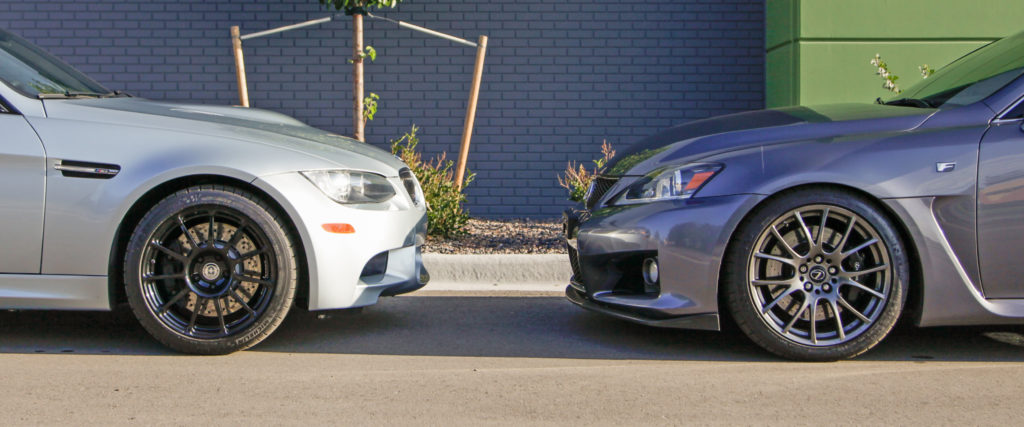
Bulged hoods and angry grills–you can almost hear the growling!
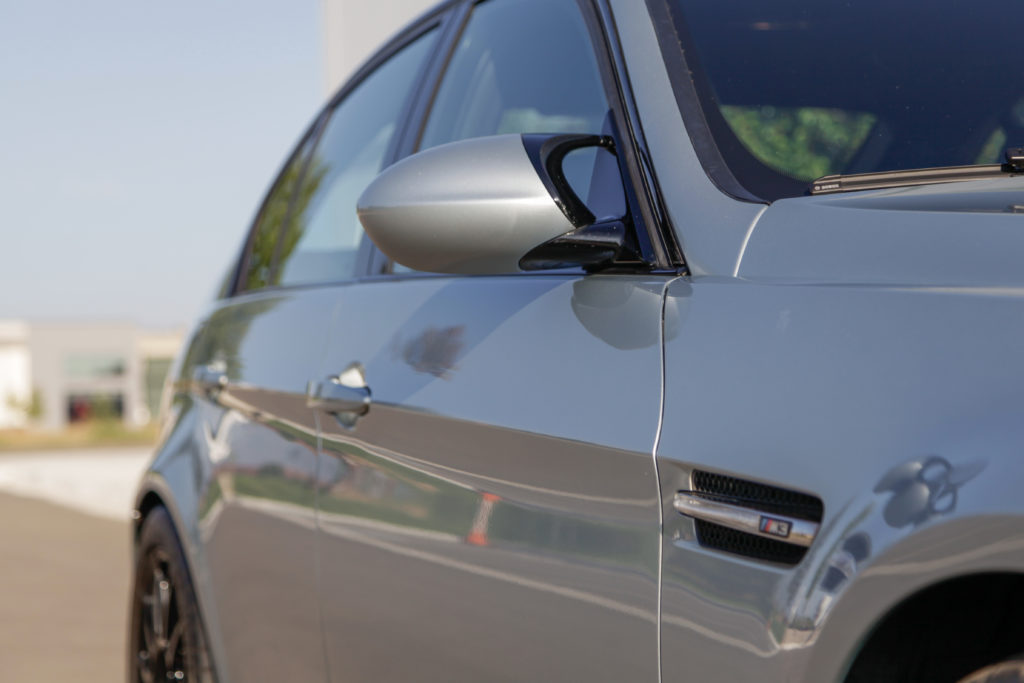
The M3’s aerodynamically sculpted mirrors.
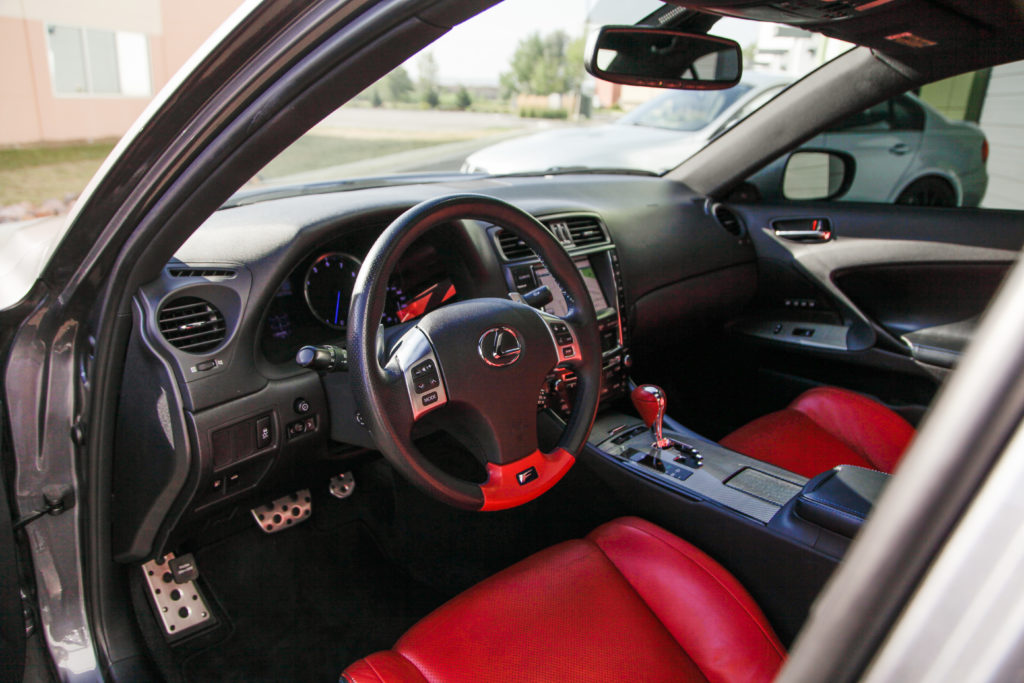
The Lexus wins the interior contest by a landslide.
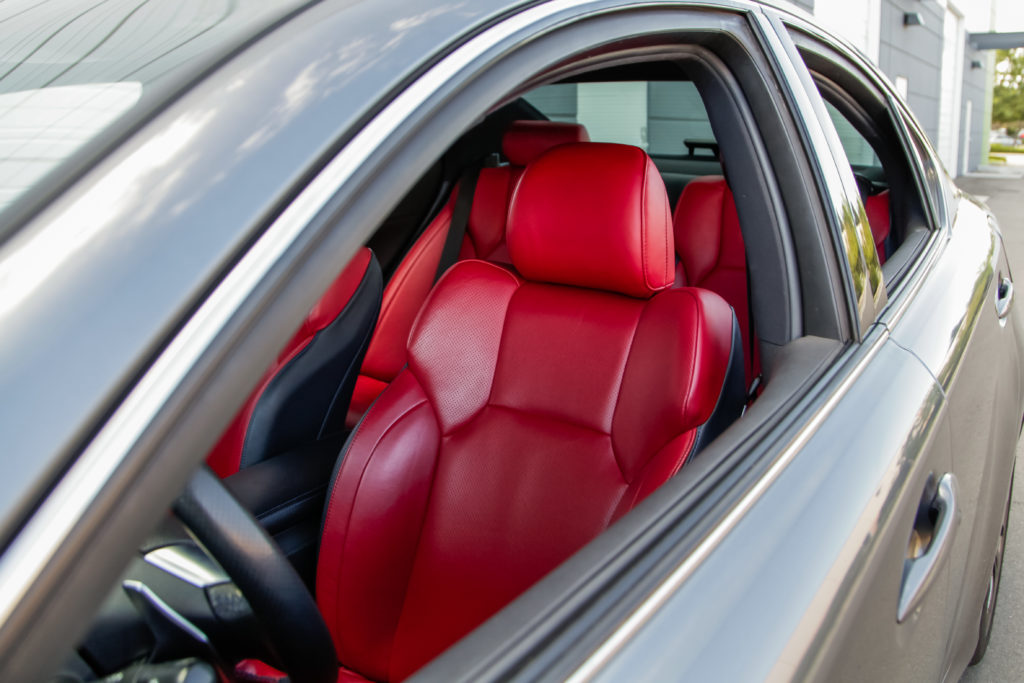
If loving red interiors is wrong, I don’t want to be right!
Venture inside of each, the differences become distinct. I am a sucker for red interiors, and the red seats of the IS-F are absolutely stunning. I intentionally left the doors open and the windows down at the gas station just to show it off. Blue “F-spec” stitching enhances the motif, along with light “aluminized” carbon fiber trim that looks like raw carbon weave—in a good way. The variety of colors might seem a bit much, but they compliment each other wonderfully. The two plus two seating arrangement makes the rear seats feel more exclusive, but would be less useful on the rare occasion that someone needed to ride the saddle. There is no shortage of opulent features and they all have intuitive controls. I have no clue who Mark Levinson is, but he makes a dam fine high fidelity sound system—every drive can be an evening at the symphony if you desire. The fit and finish oozes of quality, ensuring no doubt that this is a Toyota product. But there are other areas that also leave no doubt that this is a Toyota product. The infotainment controls and a floor-mounted parking brake pedal are all clearly down-market parts bin items. The seats are heavily bolstered, but not adjustable, making it a tight squeeze for even my relatively slender build. Outside visibly is horrid—more crossover than sedan—but Lexus Parking Assist makes up for this in tight spots.
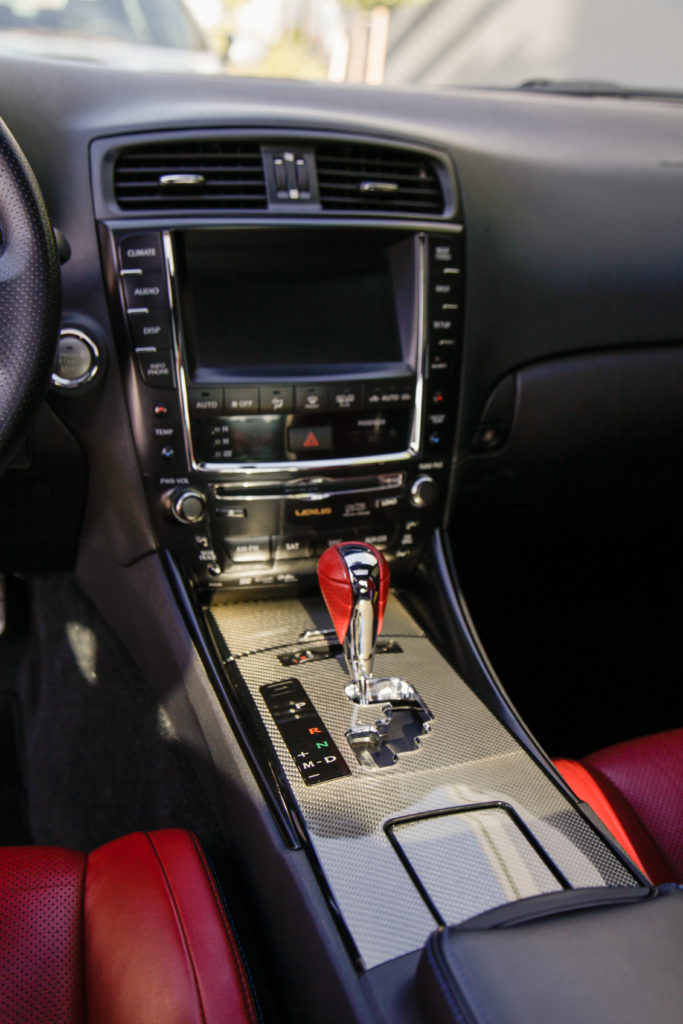
Aluminized carbon fiber trim offsets the dark black and red.
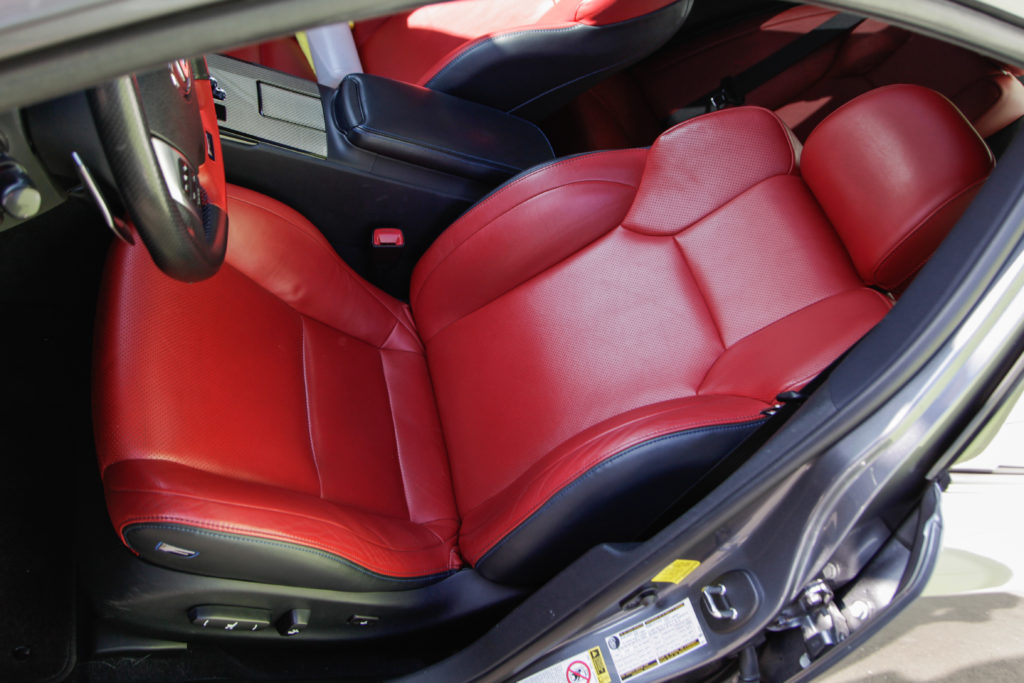
The IS-F seats were supportive, but the non-adjustable bolsters were too narrow.
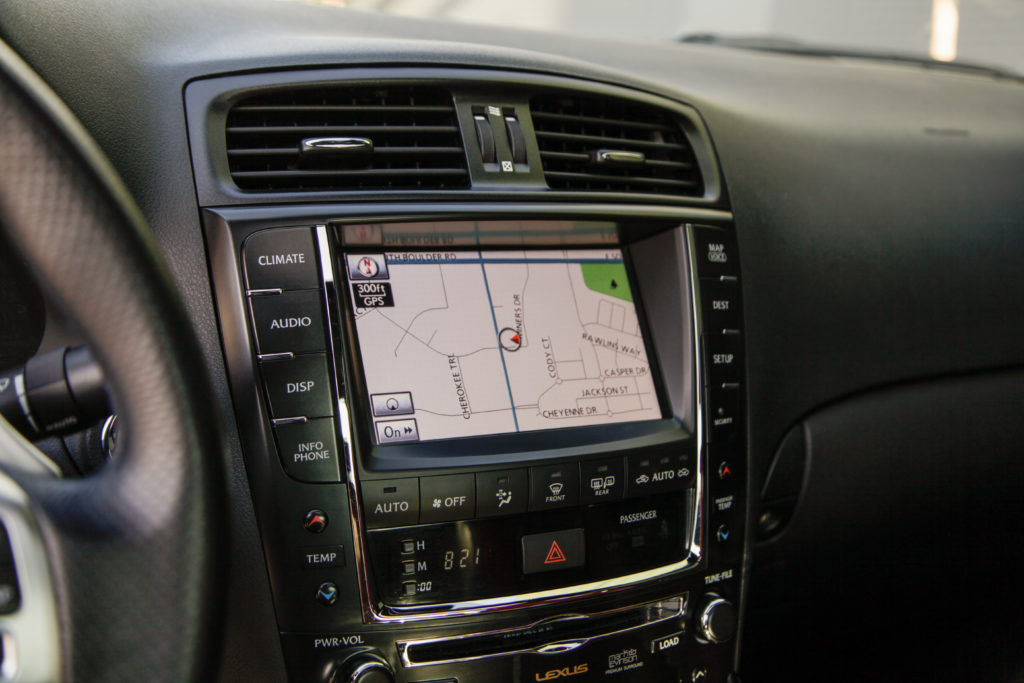
The infotainment controls and parking brake pedal are standard Toyota parts bin items.
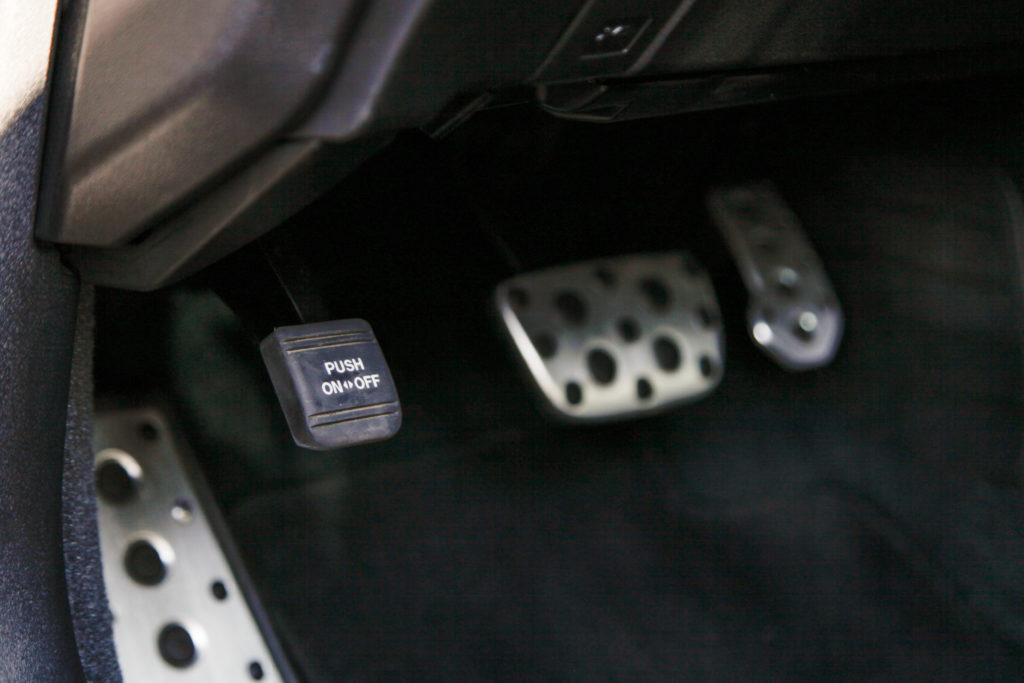
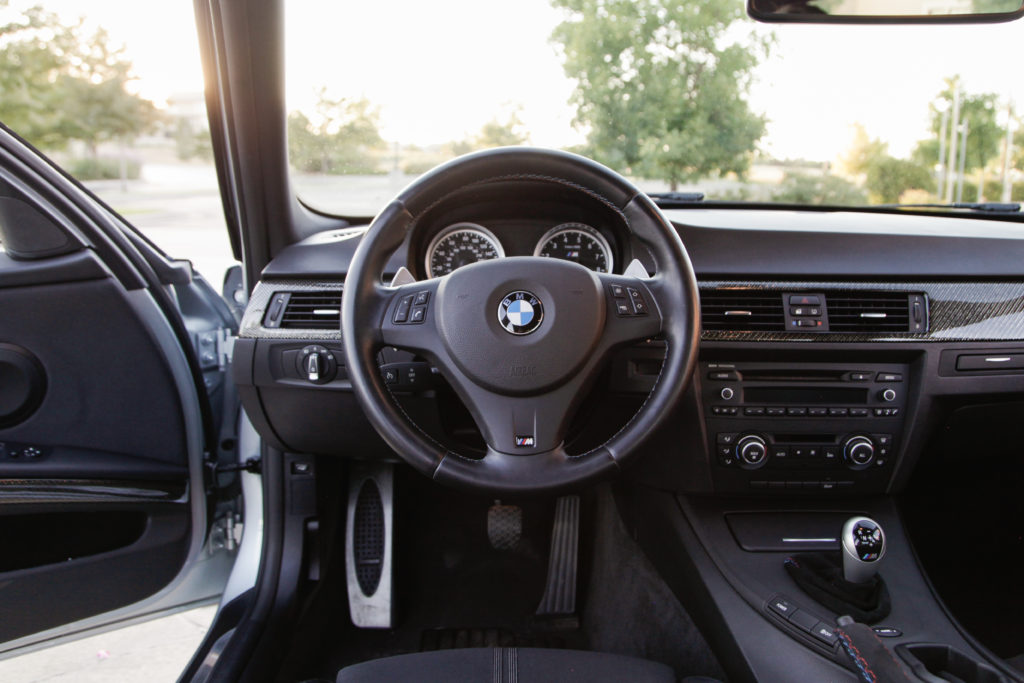
The interior of the M3 is spartan yet purposeful by comparison.
The M3’s interior is downright spartan in comparison, but this example was ordered this way on purpose. Anthracite cloth is how I would have ordered my M3 and it is accentuated brilliantly by the dark carbon fiber trim featuring a silver highlight weave. A similar weave made its initial appearance on the late-model European E34 M5s and Canadian Market M540i. Only the hardest core BMW-phile would get excited by such things as a sunroof delete, manual cloth seats, and a dashboard unfettered by iDrive—but each of those things makes this M3 more mission-focused. A small cup holder / storage cubby takes the place of the iDrive controller, a nice alternative to the awkward extendible dashboard-mounted E90 cup holders. By the E90 M3, BMW had shifted away from the driver-centric dashboard and center console, but the seating position, steering wheel, and visibility are excellent. Even with manual seats, the M3 offers significantly more adjustability and has power adjustable side bolsters. The rear seat also has an inhabitable center seat for small humans, something unique to the M3 sedan over the M3 coupe and convertible.
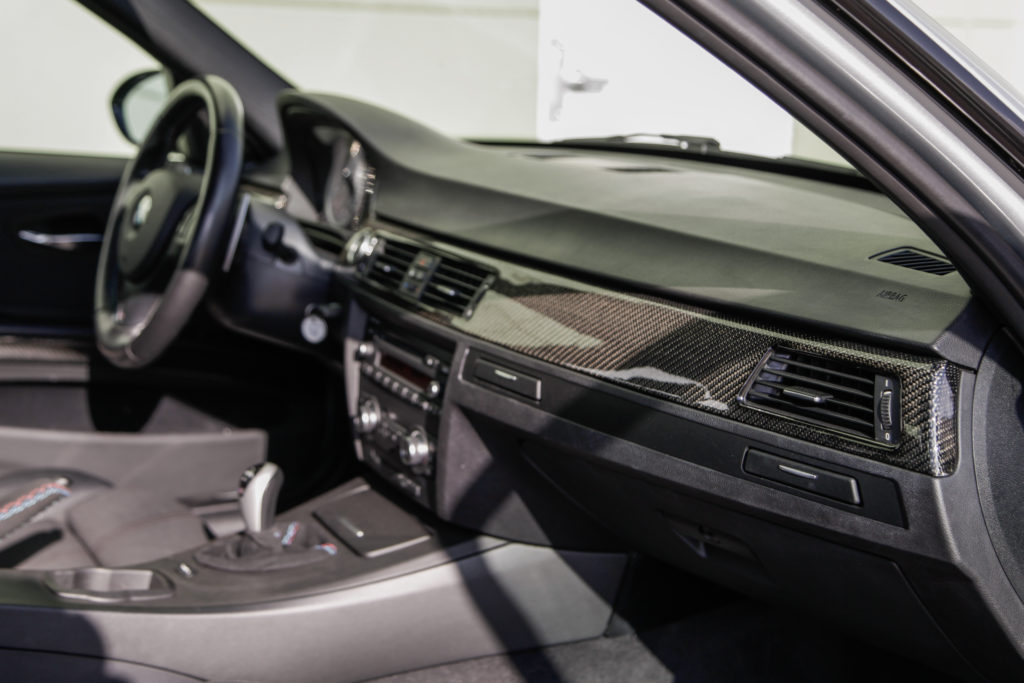
Silver accent carbon fiber weave compliments the anthracite cloth seats wonderfully.
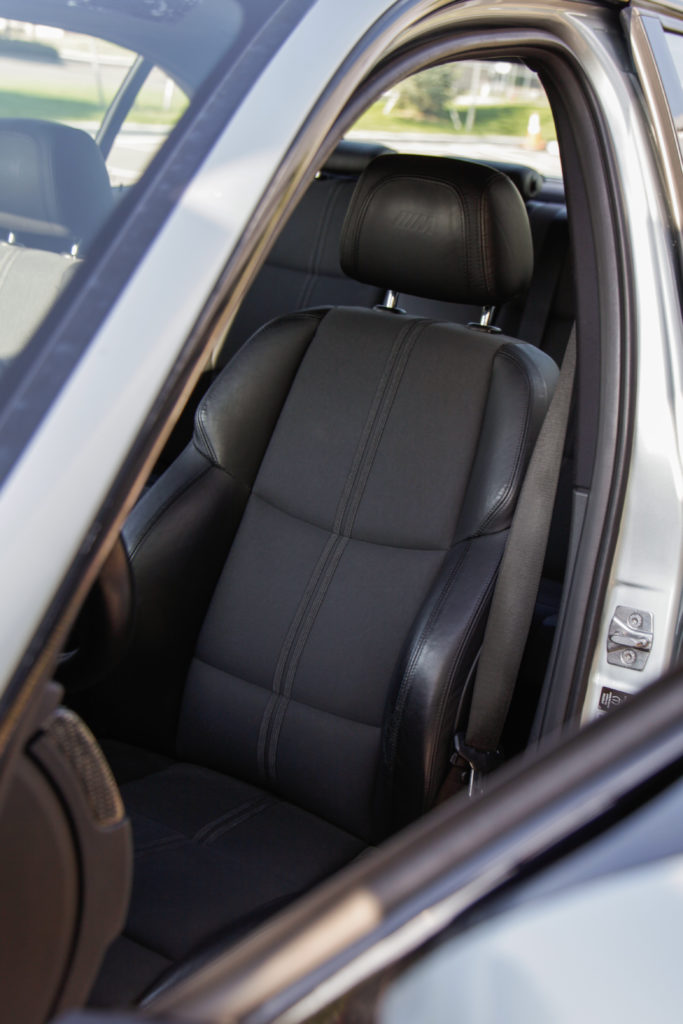
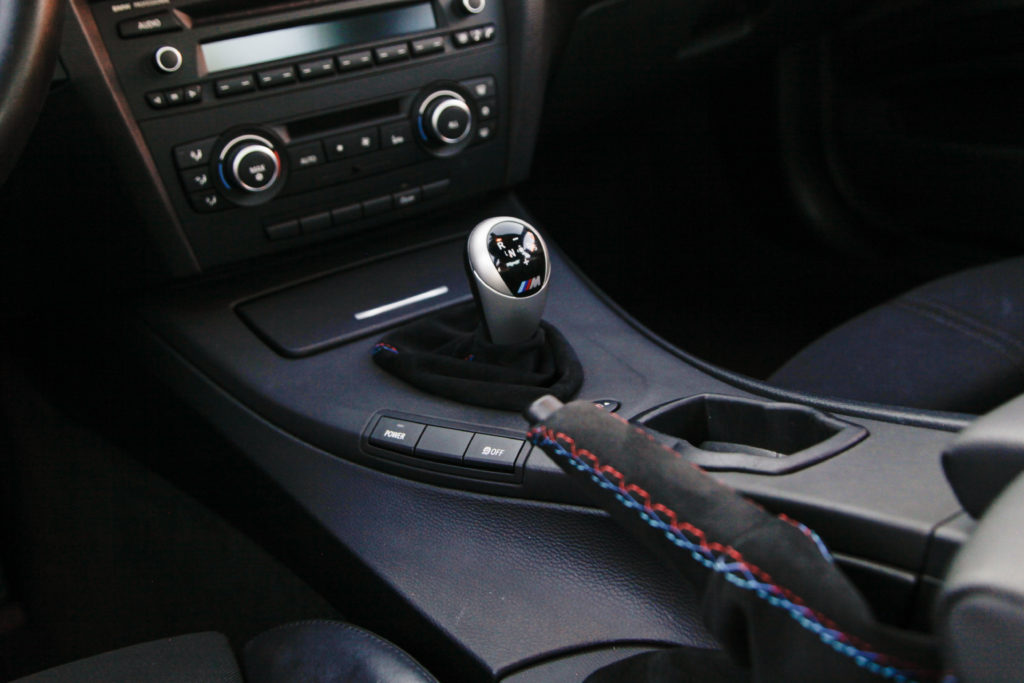
This M3’s only option is the M DCT transmission.
Get behind the wheel of each car and the differences compound. When the IS-F was first released, it was immediately compared to the M3, and more often than not it fell short. At the time it was reasonable to make the assumption that these two performance sedans would be similar, but the clarity of hindsight has shown the error of that logic. The IS-F is a luxury car with performance enhancements; the M3 is a performance car with some luxury—and not much of the latter with this example. What is interesting is how two cars that look so strikingly similar on paper are so vastly different in the real world.
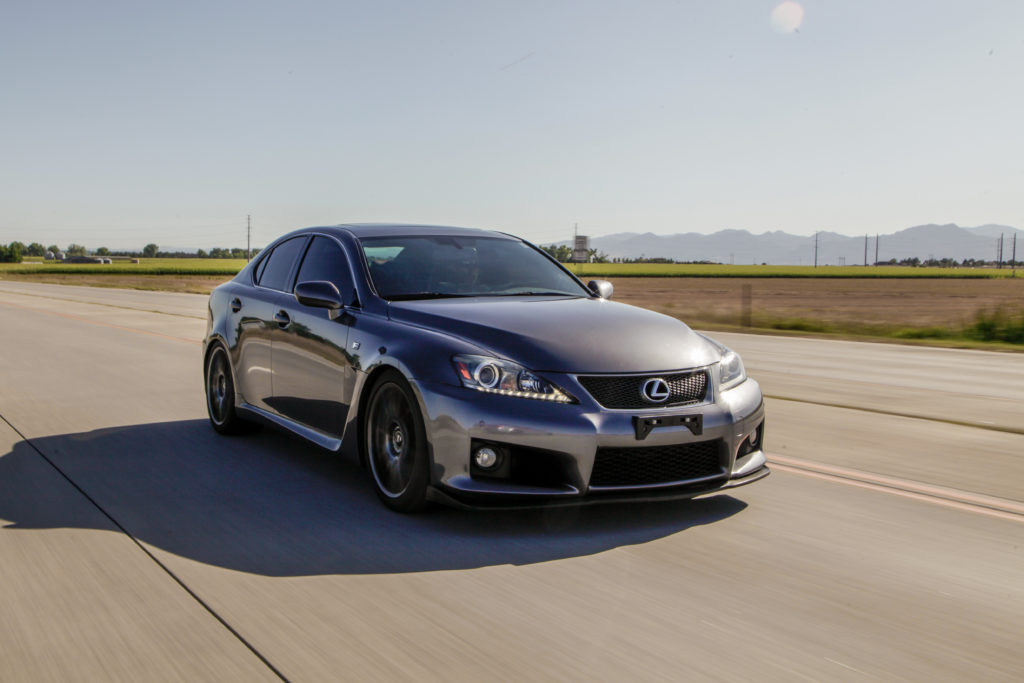
The IS-F has excellent highway manners.
Out on the open road, the IS-F is a good sports sedan, very good—for a Lexus. The five-liter V8 has more power than you should ever need and has the feel of plentiful torque. Throttle response is good, but it’s also as if there are two characters to the engine. Down low in the rev band it is quiet and subdued, then at 4,000 RPM everything changes and it comes alive with a soundtrack to match. This makes it very civilized for normal driving, until you floor it, and the world suddenly knows this isn’t your grandma’s LS400. I had no complaints with the 8-speed automatic in auto or manual modes and the paddle shifters are perfectly placed. There are also shift light bars built into the tach that are fun to watch as they turn from yellow to red.
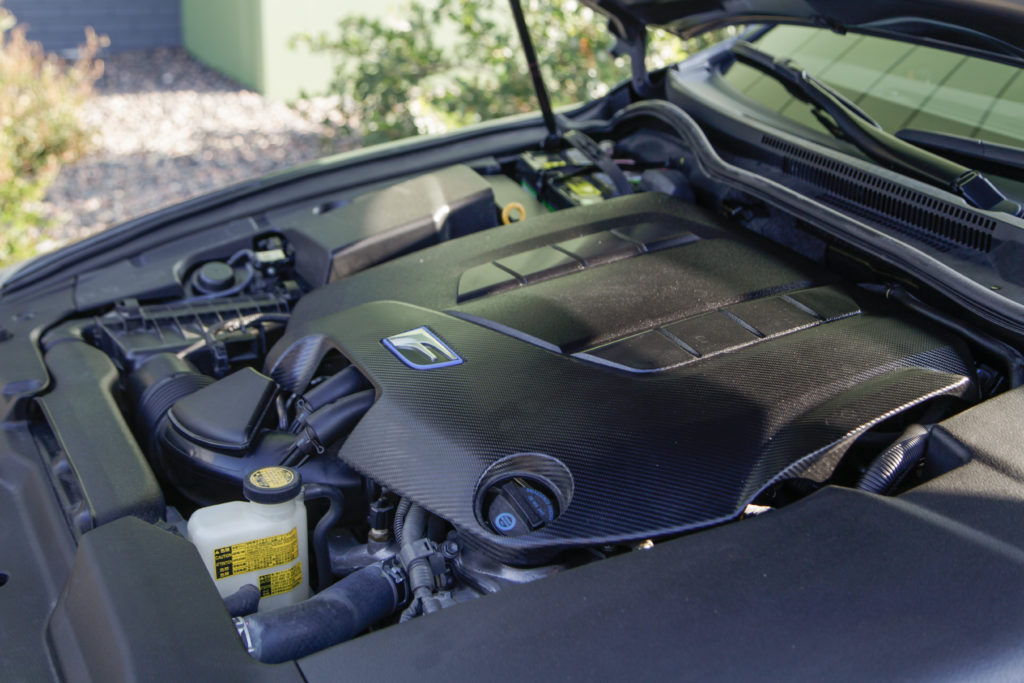
The IS-F’s V8 engine is civilized at low RPM, then comes alive above 4,000.
Push the IS-F in the corners, and there also isn’t much to find complaint with. Turn-in is adequate, body roll is minimal, and the brakes are more than powerful. Traction control interventions can be kept at bay with smoothness, but it did shunt power on corner exit more than I’d like. Sport mode allows a longer leash, which is adequate for the street, but would still be a nuisance on the track. Turn the traction control off and it’s easy to drift, but you’d better do so with a delicate touch, as the chassis is much less communicative than the M3’s. If I had never driven an M3, I really wouldn’t find much to fault with the IS-F, but the problem is—I have.
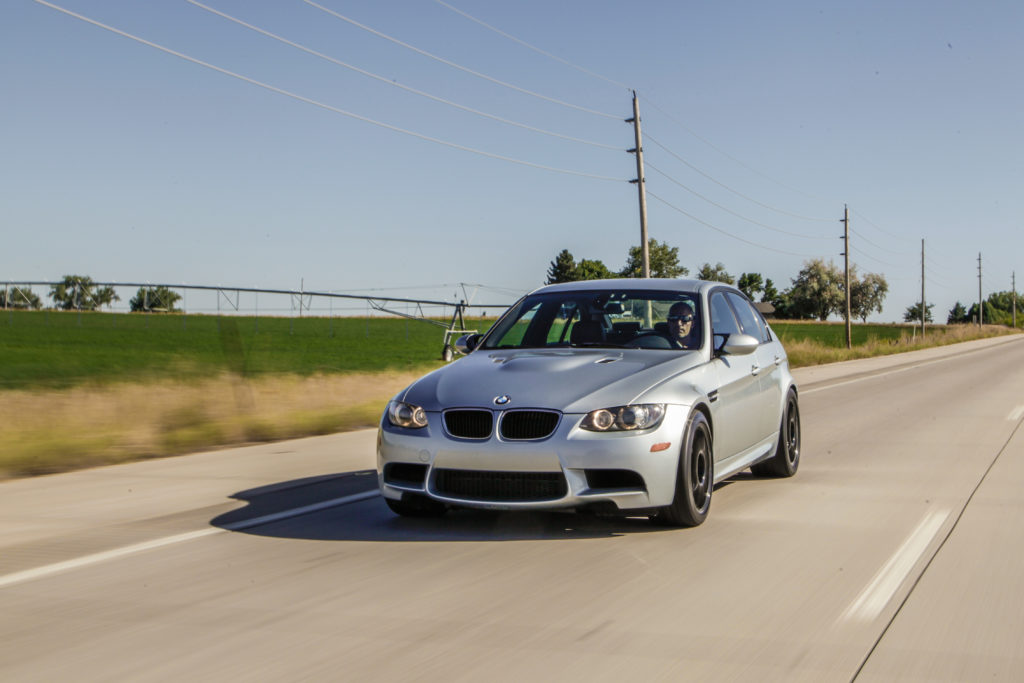
The M3 is in its element on the street or the track.
Indeed, from a driving perspective the M3 is not just a little better, it is off the chart, not-even-in-the-same-zip-code better. It was the benchmark sports sedan of the period, and the last of the non-turbo fire-breathing M cars. Ten years of hindsight has only reinforced this notion. The defining element of the M3 is the S65 V8 engine. On paper, it’s two horsepower short of the IS-F’s 2UR-GSE V8 engine, but in the real world it is so much more. Where the IS-F’s 2UR-GSE feels like a tuned and enlarged V8, the S65 is a true motorsport engine—one of the winningest engines of period in BMW Motorsports history. Unlike past M3s, full torque on the E90 M3 is available as early as 3,900 RPM so it does not need to be exercised hard to feel fast. When it is pushed, it wails like a ghost in the night all the way up to its 8,400-RPM redline. The individual throttle-bodied soundtrack it produces—enhanced by exhaust resonator deletes in this M3—is sublime! If you have blood in your veins, it is impossible not to smile with each redline pull.
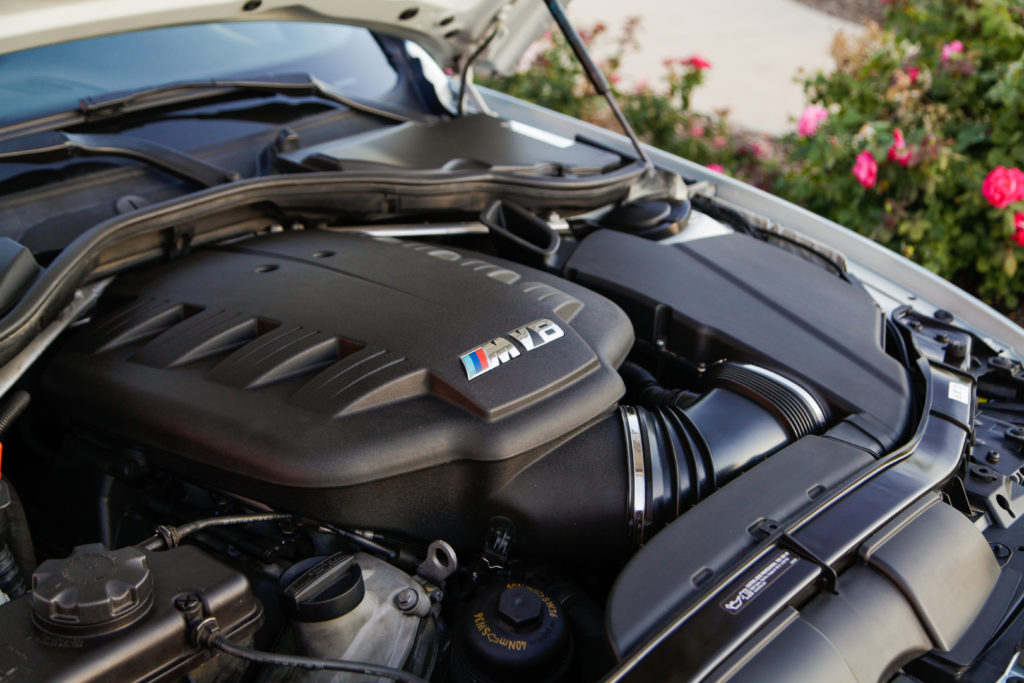
The M3’s S65 V8 engine is a true Motorsport powerplant verses the IS-F’s tuned V8.
Move beyond the theater and the drama of those 8,400 RPMs, and the M3 is extremely competent in all phases of flight. Despite its burgeoning size over past M3s, it feels much lighter than the IS-F and executes your intentions clearly and without complaint. The hydraulic steering is honest compared to the IS-F’s electric rack, and the suspension composure allows exponential confidence near the limit. The M double clutch gearbox does not leave you wanting for a third pedal, while offering true manual shifting in comparison to the torque convertor in the IS-F. Shift lights incorporated into the tachometer bezel are a nice touch. M Drive allows an even longer leash than the IS-F’s sport mode through M Dynamic Mode at the press of the M button on the steering wheel. That said, with just the slightest amount of talent, the chassis is so good that stability control is all but unnecessary. Where the IS-F hunts and fumbles to deliver what you ask of it near the limit, the M3 delivers it with predicable precision.
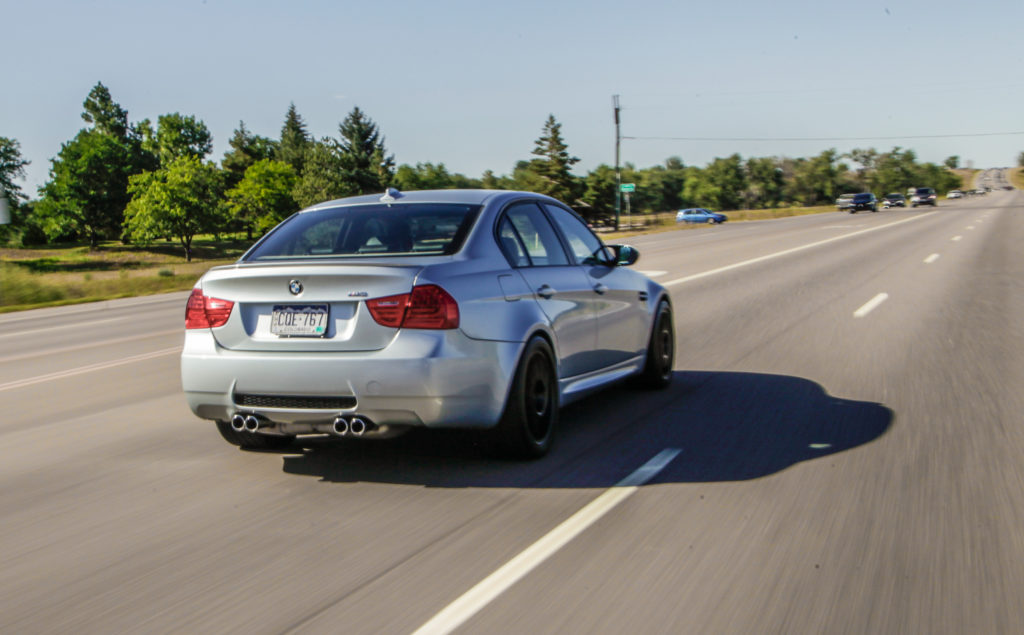
The M3 is the one that I would take home.
There is a sum-greater-than-its-parts quotient to BMW M cars, and with four generations of M3s preceding it, the M3 of the late-2000s is no exception. Despite its lengthy list of performance enhancements, the IS-F just falls short of the M3’s total package. But the IS-F isn’t an M3, and with the perspective of ten years of hindsight it is time to stop expecting it to be. The qualities where the IS-F falls short of the M3 make it the vehicle of choice for daily driving drudgery. It is more civilized in rush hour, it has more standard options, and it has proven to be much more reliable. In my time with it, I chose it more often than the M3 for the act of using it as a car: airport runs, downtown jaunts, and grocery getting. While doing so, it got more attention from the general public than the M3 and has also commanded a higher resale premium. Yet, if I’m spending the money that either of these very-well sorted examples commands, there is no question—the M3 would be the only one that lives in my garage.—Alex McCulloch.
[Photos courtesy Peter Thompson.]

